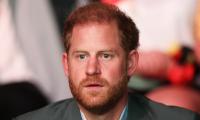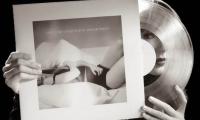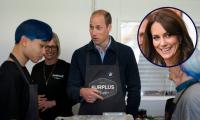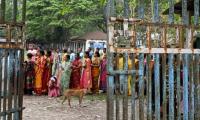WASHINGTON: The U.S. economy grew at its weakest pace in three years in the first quarter as consumer spending barely increased and businesses invested less on inventories, in a potential setback to President Donald Trump's promise to boost growth.
Gross domestic product increased at a 0.7 percent annual rate also as the government further cut defense spending, the Commerce Department said on Friday in its advance estimate. That was the weakest performance since the first quarter of 2014.The economy grew at a 2.1 percent pace in the fourth quarter.
The pedestrian first-quarter growth pace is, however, not a true picture of the economy´s health. The labor market is near full employment, generating stronger wage growth, and consumer confidence is near multi-year highs.
That suggests the mostly weather-induced sharp slowdown in consumer spending is probably temporary. First-quarter GDP also tends to underperform because of difficulties with the calculation of data that the government has acknowledged and is working to rectify.
"Weak, but GDP growth has tended to be below trend in first quarters in recent years, cautioning against extrapolating," said Jim O´Sullivan, chief U.S. economist at High Frequency Economics in Valhalla, New York. "We expect reacceleration in the second quarter."
Even without the seasonal quirk and temporary restraints, economists say it would be difficult for Trump to fulfill his pledge to raise annual GDP growth to 4 percent, without increases in productivity. Trump is targeting infrastructure spending, tax cuts and deregulation to achieve his goal of faster economic growth.
On Wednesday, the Trump administration proposed a tax plan that includes cutting the corporate income tax rate to 15 percent from 35 percent, but offered no details. Growth in consumer spending, which accounts for more than two-thirds of U.S. economic activity, braked to a 0.3 percent rate in the first quarter.
That was the slowest pace since the fourth quarter of 2009 and followed the fourth quarter´s robust 3.5 percent growth rate.
The weakness in consumer spending is blamed on a mild winter, which undermined demand for heating and utilities production. Higher inflation, which saw the personal consumption expenditures index averaging 2.4 percent in the first quarter - the highest since the second quarter of 2011 - also weighed on consumer spending.
Government delays issuing income tax refunds to combat fraud also curbed consumer spending. But with savings rising to $814.2 billion from $778.9 billion in the fourth quarter, consumer spending is likely to pick up.
A separate report on Friday from the Labor Department showed private wages and salaries accelerated 0.9 percent in the first quarter, the largest increase in a 10 years, after rising 0.5 percent in the fourth quarter.
Economists believe Federal Reserve officials are likely to view both the anemic consumer spending and GDP growth as temporary when they meet next week. Fed Chair Janet Yellen has previously described quarterly GDP as "noisy." The Fed is not expected to raise interest rates next week.
The U.S. central bank lifted its overnight interest rate by a quarter of a percentage point in March and has forecast two more hikes this year. After contributing to GDP growth for two straight quarters, inventory investment was a drag in the first quarter.
Businesses accumulated inventories at a rate of $10.3 billion in the last quarter, down from $49.6 billion in the October-December period. Inventories subtracted 0.93 percentage point from GDP growth, almost reversing the 1.0 percentage point contribution in the fourth quarter.
Government spending fell at a 1.7 percent rate as defense outlays declined at a 4.0 percent pace, the biggest drop since the fourth quarter of 2014. It was the second quarterly drop in defense outlays. State and local government investment also fell.
There was some good news in the first quarter. Business investment improved further, with spending on equipment jumping at a 9.1 percent rate thanks to rising gas and oil well drilling as oil prices continue their recovery from multi-year lows.
Spending on mining exploration, wells and shafts surged at a record 449 percent rate after rising at a 23.7 percent pace in the fourth quarter, accounting for the rebound in nonresidential structures investment.
Spending on nonresidential structures accelerated at a 22.1 percent pace in the first quarter after falling at a 1.9 percent rate in the prior period.
Investment in home building increased for a second quarter. A rise in imports was offset by sturdy gains in exports, leaving a smaller trade deficit, which had a neutral impact on GDP growth.
Sheikh argued that the government should have maintained stable petroleum prices
MARI has successfully drilled and tested the third appraisal well in the Ghazij formation in the Mari D&PL
Gold rates decreased by $17 to $2,395 per ounce in the international market
Company's revenue saw a 13.9% year-on-year increase, reaching Rs49.2 billion, up from Rs43.19 billion in the same...
A man counts US dollars in a money exchange shop in Dhaka. — AFP/FileLAHORE: The first thing that the government...
Power generation stood at 8,741 gigawatt-hours or 11,749 megawatts in March







